The Peter Lindsay Memorial Lecture 2024
Monday 21st October, 18:00, City and Guilds LT200

Digital technologies for healthcare: a response to Lord Darzi?
Professor Lord Tarassenko, CBE FREng FMedSci
Find out more, and register to attend
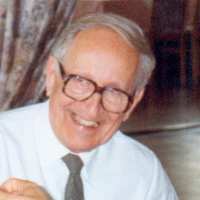
Peter Lindsay, an alumnus of Imperial College who died in 2006, was Emeritus Professor at King’s College London and Research Professor at Queen Mary, University of London, and was distinguished for his contributions to microwave device theory, quantum electronics and the application of lasers in engineering.
Professor Lindsay came to London in 1939 and gained a BSc, MSc and PhD at Imperial in quick succession. He specialised in research on microwave electron tubes (valves) and produced seminal papers on electron velocity distributions and noise phenomena in magnetron devices.
He worked in industry and academia in the US before returning to the UK as a lecturer in electrical engineering at King’s where he was was awarded a personal chair in physical electronics in 1974, and also served as Dean of Engineering. Peter was a Fellow of the Institution of Electrical Engineers, the Institute of Physics, and the City and Guilds College.
The annual lecture invites eminent speakers to discuss developments that are enhancing the knowledge and understanding of scientists and researchers who are at the forefront of tackling challenges.
Previous Peter Lindsay Memorial Lectures
- 2022 Can we trust the statistics in the media? - Professor Sir David Spiegelhalter
- 2021 Volcanoes and past climate - Professor Tamsin Mather
- 2020 Visions for Engineering Design - Professor Bob Spence
- 2019 The AI revolution: hype vs reality - Professor Chris Bishop
- 2018 Quantum Universe - Professor Neil Turok
- 2017 Great Ideas of Biology - Sir Paul Nurse
- 2016 From Mars to the Multiverse: Life, Space and the Cosmos - Lord Martin Rees OM
- 2015 Driven by mobile autonomy: an enabling technology of the future - Professor Paul Newman
- 2014 A Stroke of Bad Luck - Professor Dame Nancy Rothwell
- 2013 Nature, Nurture or Neither: what we do not know about Genetics - Professor Steve Jones FRS
- 2012 Exploring Physics Moments After The Big Bang - Professor Sir Tejinder S Virdee
- 2011 The Pursuit of Pulsars - Professor Dame Jocelyn Bell Burnell
- 2010 Financial, Ecological and Disease-transmitting Networks - Professor Lord May of Oxford
- 2009 Flat Panel Television - How the UK Made it Happen - Professor Cyril Hilsum
- 2008 The Box of Tricks - Sir Henry Tizard's Mission to America - Stephen Phelps
The 15th Peter Lindsay Memorial Lecture was presented on 26 October 2022 by Professor Sir David Spiegelhalter FRS OBE.
The Peter Lindsay Memorial Lecture 2022
"Can we trust the statistics in the media?"
Abstract:
The current pandemic has emphasised the key role that statistics play in understanding what is going on in the world. But how do we decide whether to trust the numbers that get put in front of us? Are they being used to inform or persuade us? Using a wide range of examples, I will look at the way that statistics can be used to try and persuade audiences to think or act in a certain way, contrast this with efforts to make communication 'trustworthy', and list the questions that you should ask whenever you are presented with claims based on numbers.
Biography:
Professor Sir David Spiegelhalter FRS OBE is Chair of the Winton Centre for Risk and Evidence Communication in the Centre for Mathematical Sciences at the University of Cambridge, which aims to improve the way that statistical evidence is used by health professionals, patients, lawyers and judges, media and policy-makers. He has been very busy over the COVID crisis. He presented the BBC4 documentaries “Tails you Win: the Science of Chance”, the award-winning “Climate Change by Numbers”, and in 2011 came 7th in an episode of BBC1’s Winter Wipeout. His bestselling book, The Art of Statistics, was published in March 2019, and Covid by Numbers came out in September 2021.
He was knighted in 2014 for services to medical statistics, was President of the Royal Statistical Society (2017-2018), and became a Non-Executive Director of the UK Statistics Authority in 2020.
The 14th Peter Lindsay Memorial Lecture was presented on Wednesday 6 October 2021 by Professor Tamsin Mather, volcanologist and Professor of Earth Sciences at the University of Oxford.
Abstract
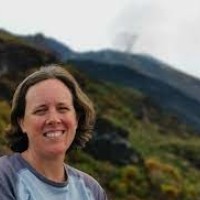 Volcanoes are spectacular natural phenomena. Earth has experienced volcanism since its beginnings and observing a volcanic eruption is a truly primeval experience.
Volcanoes are spectacular natural phenomena. Earth has experienced volcanism since its beginnings and observing a volcanic eruption is a truly primeval experience.
Volcanoes have shaped our planet and have been key in creating and maintaining its habitability. However, they can also be deadly natural hazards and are implicated in some of the greatest environment crises in Earth’s history, such as mass extinction events.
In this talk, volcanologist Professor Tamsin Mather will explore some of the different types of volcanic activity that we see on Earth today and have seen over its geological history. Volcanism is intimately linked with our planet’s geological carbon cycle and therefore its long-term climate. This talk will reveal how studying volcanic gases and rocks today can give us fundamental insights into some of the drivers of long-term global climate evolution and many of the most profound environmental changes in geological history including mass extinction events.
Biography
Tamsin Mather is a volcanologist and Professor of Earth Sciences at the University of Oxford, UK where she has been on the faculty since 2006.
She took an undergraduate Masters degree in Chemistry and a Masters degree in History and Philosophy of Science from the University of Cambridge. After a year working in Germany and then Brussels doing a placement for the European Commission, she returned to Cambridge, completing a PhD on the atmospheric chemistry of volcanic plumes and their environmental effects in 2004.
Since then her research has broadened to explore the diverse ways in which volcanoes interact with Earth’s environment, the processes driving volcanic unrest and eruption processes and the hazards they pose. Before joining Oxford she was a Research Council Fellow at the UK Parliamentary Office of Science and Technology, and a Royal Society Dorothy Hodgkin Research Fellow in Cambridge. In 2008 she was a UNESCO/L’Oréal UK & Ireland Women in Science awardee; she won Philip Leverhulme prize in 2010, was UK Mineralogical Society Distinguished Lecturer in 2015/16 and the winner of the 2018 Rosalind Franklin Award and Lecture from the Royal Society. She has been deputy director of the NERC Centre for Observation & Modelling of Earthquakes, Volcanoes & Tectonics, an editor of Earth and Planetary Science Letters and has sat on NERC Science Committee. She is currently associate head of department (research), holds an ERC grant to study signals for large-scale volcanism in deep time and is a member of the International Continental Drilling Program Science Advisory Group . She has participated in numerous science festivals, broadcasts and podcasts including BBC Radio 4’s Life Scientific and The Infinite Monkey Cage.
The 2020 Peter Lindsay Memoral Lecture: 2020 Visions for Engineering Design, was presented by Emeritus Professor Bob Spence on Tuesday 10th March 2020.
2020 Peter Lindsay Memorial Lecture
Abstract: In 1995, Bob Spence interviewed 12 respected engineers to elicit their visions of engineering design 25 years later, in 2020.
In his Peter Lindsay Lecture "2020 Visions for Engineering Design" Bob will review some of those visions to see what can be learned from them, and will present some thoughts as to how features of human cognition and perception might be triggers for new visions.
Biography: Bob Spence is Professor Emeritus of Information Engineering and a Senior Research Investigator at Imperial College London. An unusual schoolboy hobby of constructing telephone exchanges was followed by a PhD from Imperial College which, in his words "was fun, but had little influence on the Earth’s movement around the Sun".
After research in the USA he returned to Imperial College in 1962, initially concerned with circuit design and manufacture. But during the 1960s he saw the potential that the newly emerging interactive computer graphics could have for engineering design, and began research into its application to electronic circuit design. That research and development culminated in 1985 when Bob became the founding chairman of a company successfully marketing the first interactive-graphic tool for circuit design.
As a result of this work he was a pioneer in the field of Human-computer Interaction and, in that context, was the co-inventor of the fisheye lens, a new notation for interactive systems, a tool for circuit design exploiting optimization algorithms, and techniques for Rapid Serial Visual Presentation.
In the last couple of years, he designed the interface for a hand-held device supporting the self-management of Type-1 diabetes His undergraduate teaching, which he enjoys, has resulted in twelve books, and he regularly presents workshops on Design for Information Visualization in Italy, Portugal, The Netherlands and elsewhere.
Bob’s research has led to the award of three higher doctorates: on Circuit Theory (University of London, 1984), Interaction Design (Royal College of Art, 1995) and Interactive Visual Artefacts (Imperial College, 2018). He was elected to Fellowship of the Royal Academy of Engineering in 1991.
The 12th annual Peter Lindsay Memorial Lecture : 'AI revolution: hype vs reality' was presented by Professor Chris Bishop on 30th May 2019.
Over the last few years, Artificial Intelligence has become the subject of widespread excitement as well as substantial investment by governments and industry. In this talk I will begin by peeling away the hype, to reveal a fundamental transformation in our ability to create software-based technology, made possible by enabling machines to learn from data rather than programming them by hand. After exploring key ideas behind modern machine learning, I will conclude by looking at some of the many ways in which this technology could influence our lives.
Biography
Christopher Bishop is a Microsoft Technical Fellow and Director of the Microsoft Research Lab in Cambridge, UK.
He is also Professor of Computer Science at the University of Edinburgh, and a Fellow of Darwin College, Cambridge. In 2004, he was elected Fellow of the Royal Academy of Engineering, in 2007 he was elected Fellow of the Royal Society of Edinburgh, and in 2017 he was elected Fellow of the Royal Society.
At Microsoft Research, Chris oversees a world-leading portfolio of industrial research and development, with a strong focus on machine learning and AI, and creating breakthrough technologies in cloud infrastructure, security, workplace productivity, computational biology, and healthcare.
Chris obtained a BA in Physics from Oxford, and a PhD in Theoretical Physics from the University of Edinburgh, with a thesis on quantum field theory. From there, he developed an interest in pattern recognition, and became Head of the Applied Neurocomputing Centre at AEA Technology. He was subsequently elected to a Chair in the Department of Computer Science and Applied Mathematics at Aston University, where he set up and led the Neural Computing Research Group.
Chris is the author of two highly cited and widely adopted machine learning text books: Neural Networks for Pattern Recognition (1995) and Pattern Recognition and Machine Learning (2006). He has also worked on a broad range of applications of machine learning in domains ranging from computer vision to healthcare. Chris is a keen advocate of public engagement in science, and in 2008 he delivered the prestigious Royal Institution Christmas Lectures, established in 1825 by Michael Faraday, and broadcast on national television.
2018 Peter Lindsay Memorial Lecture - Professor Neil Turok
Observations reveal the cosmos to be astonishingly simple, and yet deeply puzzling, on the largest accessible scales. Why is it so nearly symmetrical? Why is there a cosmological constant (or dark energy) and what fixes its value? How did everything we see emerge from a singular “point” in the past?
Many lines of evidence now point to a quantum beginning, in which spacetime itself was governed by quantum laws. Hitherto, it has been assumed that such a beginning necessarily required cosmic inflation, and ad hoc ingredients including an initially dominant “inflaton” field.
Recently, using powerful new mathematical techniques, Turok and colleagues have proven such proposals to be mathematically inconsistent. More excitingly, they now have a glimpse of a far more minimal and predictive “causa sui” cosmology.
Neil Turok
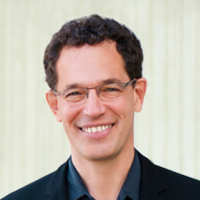 Neil Turok (PhD Imperial College London, 1983) is Director and Niels Bohr Chair at the world-renowned Perimeter Institute for Theoretical Physics in Ontario, Canada. Previously, he was Reader at Imperial, Professor of Physics at Princeton and Chair of Mathematical Physics at Cambridge.
Neil Turok (PhD Imperial College London, 1983) is Director and Niels Bohr Chair at the world-renowned Perimeter Institute for Theoretical Physics in Ontario, Canada. Previously, he was Reader at Imperial, Professor of Physics at Princeton and Chair of Mathematical Physics at Cambridge.
Turok’s research focuses on developing and testing cosmological theories. His predictions for the correlations of the polarization and temperature of the cosmic background radiation (CBR) and of the galaxy-CBR correlations induced by dark energy have been confirmed at high precision. He has pioneered detailed investigations of many theoretical proposals, including cosmic strings, “single-bubble” inflationary universes - the basis of the multiverse paradigm - as well as cyclic universe scenarios.
Born in South Africa, Turok founded the African Institute for Mathematical Sciences (AIMS) which operates centres of excellence for postgraduate training and research in South Africa, Senegal, Ghana, Cameroon, Tanzania, and Rwanda. For his discoveries and his work building AIMS, Turok was awarded a TED Prize in 2008. In 2012, he delivered the CBC Massey Lectures, broadcast across Canada and published as The Universe Within, a prizewinning bestseller. In 2016 he was awarded an Honorary Fellowship of the UK Institute of Physics, the John Torrence Tate Medal of the American Institute of Physics for International Leadership in Physics as well as the John Wheatley Award from the American Physical Society.
The 2017 lecture was presented by Professor Sir Paul Nurse FRS FREng - Director of the Francis Crick Institute - 15th February 2017
2017 Peter Lindsay Memorial Lecture - Professor Sir Paul Nurse
Three of the great ideas of biology are the gene theory, the theory of evolution by natural selection, and the proposal that the cell is the fundamental unit of all life. When considering the question of what is life these ideas come together, because the special way cells reproduce provides the conditions by which natural selection takes place allowing living organisms to evolve. A fourth idea is that the organisation of chemistry within the cell provides explanations for life’s phenomena. A new idea is the central role that information management plays in generating biological organisation. These ideas are also relevant for what it is to be human.
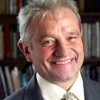 Sir Paul Nurse
Sir Paul Nurse
Sir Paul Nurse was born in Norfolk and raised in London, where he attended Harrow County Grammar School. In 1970 he received a degree in biology at the University of Birmingham and a PhD in 1973 from the University of East Anglia for research on amino acid pools Candida utilis. After spending several months in Urs Leupold's laboratory in Bern, Switzerland, where he learned classical genetics of fission yeast, he went to the laboratory of Murdoch Mitchison at the University of Edinburgh for postdoctoral studies on the cell cycle. Here, between 1973-1979, he used a classical genetic approach to study the cell cycle by identifying and studying a set of cell cycle defective mutants that have formed the basis of much of his future work. From this work Paul identified the cdc2 gene in the yeast Schizosaccharomyces pombe and showed that it controlled the progression of the cell cycle from G1 phase to S phase and the transition from G2 phase to mitosis. In 1979 he set up his own laboratory at the University of Sussex. Here he developed techniques that allowed him to clone the cdc2 gene from fission yeast and show that it encoded a protein kinase.
In 1984, Paul joined the Imperial Cancer Research Fund (ICRF; this became Cancer Research UK in 2002) and in 1987 he identified the human cdc2 homologous gene, Cdk1, which codes for a cyclin dependent kinase. He left ICRF in 1988 to chair the Department of Microbiology at the University of Oxford. Here he continued his work on the cell cycle but also initiated new research areas to study cell form and genomics. He returned to the ICRF as Director of Research in 1993, and in 1996 became Director General of the ICRF and in 2002 the Chief Executive of Cancer Research UK.
In 2003, Paul became President of Rockefeller University in New York City where he continued to work on the cell cycle, cell form and genomics of fission yeast. In 2010, he became the first Director and Chief Executive of the Francis Crick Institute in London and President of the Royal Society.
Paul was awarded the 2001 Nobel Prize in Physiology or Medicine along with Leland Hartwell and Tim Hunt for their discoveries of protein molecules that control the division (duplication) of cells in the cell cycle. In 1989 he was elected a Fellow of the Royal Society (FRS) and in 1995 he received the Royal Society Royal Medal and became a foreign associate of the US National Academy of Sciences. He received the Albert Lasker Award for Basic Medical Research in 1998 and was knighted in 1999. He was awarded the French Legion d'Honneur in 2002 and the Royal Society Copley Medal in 2005. He was elected a Foreign Honorary member of the American Academy of Arts and Sciences in April 2006 and has been a member of the Council for Science and Technology advising the Prime Minister since 2000. In 2013 he became the winner of the Albert Einstein World Award of Science conferred by the World Cultural Council.
The 9th Peter Lindsay Memorial Lecture - From Mars to the Multiverse: Life, Space and the Cosmoswas presented by The Lord Rees of Ludlow OM on 24 February 2016.
2016 Peter Lindsay Memorial Lecture - Lord Rees
Unmanned spacecraft have visited the other planets of our Solar System (and some of their moons), beaming back pictures of varied and distinctive worlds - but none propitious for life. But prospects are far more interesting when we extend our gaze to other stars: Most stars are, like our Sun, orbited by retinues of planets. Our home Galaxy contains a billion planets like the Earth. Will post-humans one day visit some of them? Or are they inhabited already? If so, are the 'aliens' organic or 'AI'?
Moreover, our Galaxy is one of billions visible with a large telescope which are all the aftermath of a cosmic 'big bang' 13.8 billion years ago. More astonishing still, 'our' big bang may not have been the only one, but merely a member of a vast (perhaps infinite) ensemble.
This illustrated talk will address these topics, and what this perspective means for the long-range future of intelligence in the cosmos. I will emphasise that the remarkable advances in our science in recent decades are essentially owed to new engineering and technology. Armchair theory alone doesn't get us far!
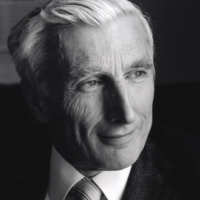 Martin John Rees, Baron Rees of Ludlow, OM, FRS, FREng, FMedSci has been Astronomer Royal since 1995 and was Master of Trinity College, Cambridge from 2004 to 2012 and President of the Royal Society between 2005 and 2010.
Martin John Rees, Baron Rees of Ludlow, OM, FRS, FREng, FMedSci has been Astronomer Royal since 1995 and was Master of Trinity College, Cambridge from 2004 to 2012 and President of the Royal Society between 2005 and 2010.
Lord Rees is the author of more than 500 research papers, and he has made important contributions to the origin of cosmic microwave background radiation, as well as to galaxy clustering and formation. His studies of the distribution of quasars led to final disproof of Steady State theory.
The 8th Peter Lindsay Memorial Lecture 11th March 2015
Driven by mobile autonomy: an enabling technology of the future
Professor Newman presents a vision of the future where robots and robotic machines will become ubiquitous in our world. Central to achieving this will be seeing vision, the ability for those machines to perceive and understand the space in which they operate, to know their position accurately and reliably within that space and to be able to assess the risks inherent when moving in an environment filled with humans, normal urban clutter and other robots.
The Oxford MRG specialises in autonomous - driverless cars. The move towards computerised driver assistance and finally self-driving cars seems inevitable. Professor Newman describes the challenges facing the development of these advances, the use of lasers for detailed and collaborative mapping of the road environment and computer vision techniques to locate the robot in that environment. The challenges of working out what is movable and transient against what is permanent in the view of a place and operating under ever changing conditions - bright sunlight or night time, noon or dusk, dry or wet, fog or snow, all represent the formidable technical hurdles being addressed. These form the basis of "experience based navigation", an approach to automated driving that Newman believes will be responsive to local conditions and robust in operation.
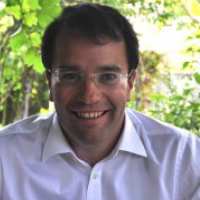 Paul Newman is the BP Professor of Information Engineering at the University of Oxford and an EPSRC Leadership Fellow. He heads up the Mobile Robotics Group within the Department of Engineering Science which enjoys a world leading reputation in mobile autonomy – developing machines and robots which map, navigate through and understand their environments.
Paul Newman is the BP Professor of Information Engineering at the University of Oxford and an EPSRC Leadership Fellow. He heads up the Mobile Robotics Group within the Department of Engineering Science which enjoys a world leading reputation in mobile autonomy – developing machines and robots which map, navigate through and understand their environments.
He obtained an MEng in Engineering Science from Oxford University, Balliol College in 1995. He then undertook a PhD in autonomous navigation at the Australian Center for Field Robotics, University of Sydney, Australia. In 1999 he returned to the United Kingdom to work in the commercial sub-sea navigation industry. In late 2000 he joined the Department of Ocean Engineering at MIT where as a post-doc and later a research scientist, he worked on algorithms and software for robust autonomous navigation for both land and sub-sea agents. In early 2003 he returned to Oxford as a Departmental Lecturer in Engineering Science before being appointed to a University Lectureship in Information Engineering and becoming a Fellow of New College in 2005, Professor of Engineering Science in 2010 and BP Professor of Information Engineering and Fellow of Keble College in 2012. He was elected Fellow of the Royal Academy of Engineering and Fellow of the IEEE in 2014 both with citations for outstanding contributions to robot navigation.
The 7th Annual Peter Lindsay Memorial Lecture - 27th March 2014
A Stroke of Bad Luck
Stroke is the third greatest killer and causes massive disability, yet there are few effective treatments. It is caused by a disruption of blood flow to part of the brain resulting in a catastrophic cascade and death of vital brain cells (neurones).
Professor Dame Nancy Rothwell's research showed that inflammation, not commonly associated with brain disease, is a major factor in brain damage caused by a stroke and may also contribute to the devastating consequences of brain injury, haemorrhage and dementias. She has identified a key mediator of the inflammatory processes in stroke, a protein called interleukin-1 (IL-1). She has identified cell sources of IL-1, which is known to act in the brain and in the rest of the body and has completed an early clinical trial of an IL-1 blocker in stroke patients. She will talk about these findings, plans and hopes for the future.
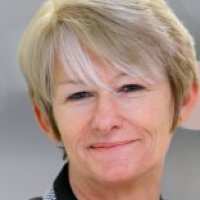 Professor Dame Nancy Rothwell FRS is President & Vice-Chancellor of The University of Manchester. She joined the Victoria University of Manchester in 1987, became Professor of Physiology in 1994 and held an MRC Research Chair from 1998 to 2010. Concurrent with her Faculty posts she has also held University roles as Vice-President for Research (2004-2007) and as Deputy President & Deputy Vice-Chancellor (2007-2010). Her own research in the field of neuroscience has contributed towards major advances in the understanding and treatment of brain damage in stroke and head injury.
Professor Dame Nancy Rothwell FRS is President & Vice-Chancellor of The University of Manchester. She joined the Victoria University of Manchester in 1987, became Professor of Physiology in 1994 and held an MRC Research Chair from 1998 to 2010. Concurrent with her Faculty posts she has also held University roles as Vice-President for Research (2004-2007) and as Deputy President & Deputy Vice-Chancellor (2007-2010). Her own research in the field of neuroscience has contributed towards major advances in the understanding and treatment of brain damage in stroke and head injury.
6th Peter Lindsay Memorial Lecture 27th February 2013
Nature, Nurture or Neither: what we do not know about Genetics
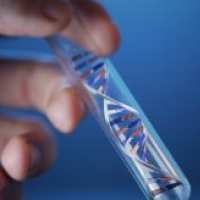 Look to the person on your left, then to the person on your right – two out of three of you will die for reasons associated with your genes.
Look to the person on your left, then to the person on your right – two out of three of you will die for reasons associated with your genes.
Until recently, most of us were killed by external agents such as starvation, cholera and filthy air. Now that heritable diseases such as cancer and diabetes are becoming more significant, it might seem that more of our fate resides in DNA.
Geneticists are becoming uneasily aware that the more we learn, the less we really understand. The idea that simple genes are linked to simple conditions faded with the human genome project and has faded further with ‘missing heritability’ - the failure to find genes behind even basic attributes such as height.
Genes always work within an environmental context, and the relative importance of the two is often impossible to separate. In the question of nature and nurture, the more we learn about genes, the more important the environment appears to be.
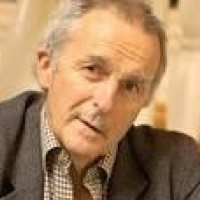 Steve Jones is emeritus professor of genetics at UCL, where he has been for almost 40 years. In that time he has become one of the world’s top six experts on the genetics of land snails (and the other five agree), but this does not stop him from pontificating about human genetics, marine biology, and other subjects about which he knows little.
Steve Jones is emeritus professor of genetics at UCL, where he has been for almost 40 years. In that time he has become one of the world’s top six experts on the genetics of land snails (and the other five agree), but this does not stop him from pontificating about human genetics, marine biology, and other subjects about which he knows little.
He has written a number of popular science books and his latest, The Serpent’s Promise, an attempt to re-write the Bible as a scientific text, appears in early 2013.
The 5th Peter Lindsay Memorial Lecture - 1st May 2012
Exploring Physics Moments After The Big Bang
What is the origin of mass? Are there extra dimensions of space? Why is the universe composed of matter rather than antimatter? Experiments at the Large Hadron Collider (LHC) at CERN are addressing some of the most fundamental questions about the origin, evolution and composition of our universe. The results have the potential to alter our perception of how Nature operates at a fundamental level.
This talk will use the Compact Muon Solenoid (CMS) experiment as an example of LHC research to outline some of the challenges faced by the scientists in building and running experiments, such as operating in the harsh environment created by hundreds of millions of high energy proton-proton collisions every second and dealing with the massive amounts of data they generate.
With physicists recently announcing results that hint tantalizingly at the existence of the elusive Higgs boson, the current data and outlook as well as the importance of fundamental research will be discussed.
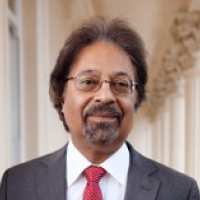 Tejinder Virdee is Professor of Physics at Imperial College London. He undertook his graduate studies at Imperial on anexperiment conducted at the Stanford Linear Accelerator Centre, USA, and then worked at CERN on various experiments including UA1 and the Compact Muon Solenoid (CMS).
Tejinder Virdee is Professor of Physics at Imperial College London. He undertook his graduate studies at Imperial on anexperiment conducted at the Stanford Linear Accelerator Centre, USA, and then worked at CERN on various experiments including UA1 and the Compact Muon Solenoid (CMS).
As one of the founding members of the CMS experiment, Professor Virdee has played a major role in all the phases including its design, the R&D and detector prototyping (inventing some of the techniques used), its construction, installation, commissioning, and data analysis. He was also the CMS spokesperson for a number of years.
Professor Virdee’s current work involves analyzing CMS results to look for new physics including the Higgs boson. He was awarded the 2009 James Chadwick Medal and Prize from the Institute of Physics for his crucial role in the design and construction of the CMS experiment.
Virdee was elected Fellow of the Royal Society in 2012 and was knighted in the the Queen's Birthday Honours in 2014.
Fourth Peter Lindsay Memorial Lecture - 25th May 2011
The Pursuit of Pulsars
In the fourth Peter Lindsay Memorial Lecture, Professor Dame Jocelyn Bell Burnell introduces the pulsing radio stars she discovered as a doctoral student.
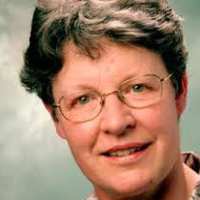 After three years as Dean of Science at the University of Bath, Professor Dame Jocelyn Bell Burnell ‘retired’ in 2004 and moved to a Visiting Professorship at the University of Oxford where she holds a Professorial Fellowship at Mansfield College, Oxford. For ten years she was Professor of Physics at the Open University, and had a year as a Distinguished Visiting Professor at Princeton University, USA.
After three years as Dean of Science at the University of Bath, Professor Dame Jocelyn Bell Burnell ‘retired’ in 2004 and moved to a Visiting Professorship at the University of Oxford where she holds a Professorial Fellowship at Mansfield College, Oxford. For ten years she was Professor of Physics at the Open University, and had a year as a Distinguished Visiting Professor at Princeton University, USA.
She read Physics at Glasgow University, Scotland followed by a PhD in Cambridge (UK) in Radio Astronomy. During her time there she was involved in the discovery of pulsars, opening up a new branch of astrophysics - work which was recognised by the award of a Nobel Prize to her supervisor.
Jocelyn Bell has chaired, served on, or serviced more Research Council Boards, Committees and Panels than she wishes to remember, and has also chaired a European Community Committee. She has been President of the Royal Astronomical Society and in 2008 became the first female President of the Institute of Physics.
She has been awarded the Oppenheimer Prize, the Michelson Medal, the Tinsley Prize and the Magellanic Premium; and the UK's Royal Astronomical Society has presented her with the Herschel Medal. UK and US universities have conferred honorary doctorates on her, and she holds several Honorary Fellowships. She was made a CBE in 1999 and that year also won the Edinburgh Medal for services to science and society. She became an FRS in 2003 and FRSE in 2004, and was elected a Foreign Associate of the US National Academy of Sciences in 2005. In 2007 she was made a DBE.
The 3rd Peter Lindsay Memorial Lecture 3rd March 2010
2010 Financial, Ecological and Disease-transmitting Networks and their Dynamics
The transmission of infection among humans or other animals, the spread of viruses or worms among computers, trasfers of funds within financial markets, and the way ecosystems respond to disturbance are four among many examples of non-linear dynamical systems whose behaviour depends upon the nature of the network of connections among nodes (that is individuals, computers, banks/traders, species, respectively).
Recent concern about HIV/AIDS, SARS, and foot and mouth didease among livestock have prompted advances in our understanding of the interplay between network patterns and effective control measures. Separate, but ultimately related, work deals with older questions about ecosystem resilience, and newerquestions about the overall stability of financial markets (as distinct from individual funds).
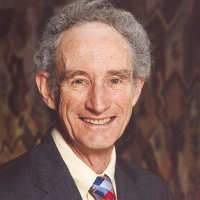 Robert McCredie May, Lord May of Oxford OM, AC, Kt, FRS, holds a professorship at Imperial jointly with Oxford University and is a fellow of Merton VCollege, Oxford. He was President of the Royal Society (2000-2005), and before that, Chief Scientific Advisor to the UK government and Head of the Office of Science and Technology (1995- 2000).
Robert McCredie May, Lord May of Oxford OM, AC, Kt, FRS, holds a professorship at Imperial jointly with Oxford University and is a fellow of Merton VCollege, Oxford. He was President of the Royal Society (2000-2005), and before that, Chief Scientific Advisor to the UK government and Head of the Office of Science and Technology (1995- 2000).
He was awarded a kinighthood in 1996, and appointed a Companion of the Order of Australia in 1998, both for services to science. In 2001 he was one of the first 15 life peers created by the House of Lords Appointment Commission.
2nd Peter Lindsay Memorial Lecture 29 April 2009:
Flat Panel Television - How the UK Made it Happen
Almost overnight a few years back high street shops changed their television stocks. Out went the familiar cathode ray tubes, and flat panels were everywhere. The picture you saw was much the same, but the set was very different. That change was the result of inspired physices, chemistry and engineering, couples together in a way unfamiliar to industry and academia alike, and the UK role was crucial.
The UK was not inactive in the first years of television. They set the seeds, with the first discovery of the electron by JJ Thomson in 1897 and then the invention of the vacuum tube in 1904 by Ambrose Fleming in London. The first transmission of an image was fone by John Logie Baird in 1924, admittedly through a cumbersome collection of moving mirrors and shutters. The world's first regular TV programmes were transmitted by the BBC in 1936, using a fully electronic systme made by EMI-Marconi. But we have to admit that the UK did little after thatn in the way of TV innovation.
THat this situation changed owes much to one of our politicians who, probably unwittingly, set us on a road of invention that has led to the modern flat-panel TV. His name is unhallowed, for he later was discredited, fortunately for reasons distinct from electronics. Nevertheless, he started a Government display programme which, though never formally approved, rapidly encompassed defence laboratories, universities and industry.
The events that followed weave together in a fascinating tapestry, bringing in strong personalities, internation friction, patent controversies and scientific triumphs. This lecture tells that story for the first time.
Professor Cyril Hilsum CBE,FRS, FAsNAE
Professor Hilsum writes:
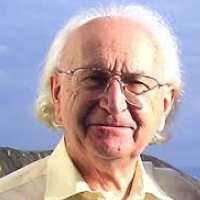 I was born in the East End of London many yers ago. I showed early some bent for engineering, taking my toys to pieces to find out how they worked. My facility from restoring them was no as well developed, so I am better described as an Applied Scientist.
I was born in the East End of London many yers ago. I showed early some bent for engineering, taking my toys to pieces to find out how they worked. My facility from restoring them was no as well developed, so I am better described as an Applied Scientist.
UCL gave me a physics degree in 1945, and I was called to the Royal Naval Scientific Service, at shich point the Japanese surrendered. I rarely though of myself as a civil servant, and was probably not alone in this, but made progress in research on thermal imaging and then on semiconductors. In ignorance and bravado I chose to work on gallium arsenide, a poisonous explosive compound, but my group was able to find some uses for it as a microwave source and laser.
There was a slight hiccup in my career in 1964, when the Director of the establishment where I was working, the Services Electronics Research Laboratory Baldock, announced that it was impossible fro us to wirk together, and he had no intention of leaving. I took the hint, and spent 19 year in Malvern, at the Royal Signals and Radar Establishment, where I developed an interest in flat panel displays, which also proved useful.
By 1983 I had become the most senior working scientist in the Civil Service. I then was invited to see what R&D looked like from the industrial side, and became the Director of Research at GEC, now long lamented. Here I found interest in many aspects of science and engineering, and was finally prised away some years after normal retirement age. I retain my connections with academia, for earlier I have been a Visiting Professor at the University of Durham and later at UCL. My appetite for personal research is kept alive by working for a small company in the North-East on functional polymars.
On the way I have been give a number of Awards and Medals from learned institutions, was President of the Institute of Physics, and elected a Fellow of the Royal Society and the Royal Academy of Engineering. I was made a Foreign Associate of teh US National Academy of Engineering about 25 years ago. I don't think they know about the toys.
1ST PETER LINDSAY MEMORIAL LECTURE 10 APRIL 2008
The Box of Tricks - Sir Henry Tizard's Mission to America
On 28th August 1940, six of Britain’s top scientists and engineers led by Sir Henry Tizard, Rector of Imperial College, London, set out on a hazardous Atlantic crossing. With them was perhaps the most precious cargo of the war – a black deed-box containing Britain’s most valuable technological secrets.
They included a device called the “cavity magnetron” which was to be the Holy Grail of the quest to secure Britain’s air defences against the Luftwaffe’s night raids. With British industry on its knees the invention needed someone to manufacture it quickly and in bulk. Tizard’s mission was to give the secret device to the Americans in the hope they would release the resources to develop it.
With an early-warning range of 100 miles the British radar system gave fighter planes time to get off the ground (where they would have been sitting ducks) and into the air where they could engage the attackers. The system had a good chance of repelling daylight onslaughts.
The problem, Tizard predicted, was that the Luftwaffe would then turn to night bombing, when its planes would be harder to shoot down. What was needed was airborne radar that would allow pilots to intercept the enemy without visual contact. The equipment would have to weigh no more than 200lb, fit into a space of no more than eight cubic feet and run off a maximum power output of 500W – as well as withstand the plane’s vibrations.
Scientists determined that radar would work best with a narrow beam, which meant shortening the wavelength to something measured not in metres but centimetres. Working in secret at Birmingham University, two scientists called John Randall and Harry Boot came up with the solution.
Small enough to hold in the palm of the hand, the cavity magnetron was a round, copper block drilled with six holes with a tiny slot running down each hole. Surrounded with a powerful magnetic field and fed with electrical power, the electrons in the cavities would swirl – just as air swirls in a whistle – to form a high-power “microwave”. Suddenly, instead of requiring masts hundreds of feet high, radar could be fitted into the nose of a twin-engined fighter. But Britain needed allies with the manufacturing clout to get the device on to the front line. The US was the obvious candidate but there was mistrust between the two powers and America was reluctant to enter the war.
Tizard’s revolutionary approach – initially opposed by Winston Churchill – was to give Britain’s secrets away. After winning Churchill’s approval Tizard met President Roosevelt at the White House and War Secretary Henry Stimson, who thought him “a very nice and sensible British scientist”. He also met teams of defence scientists and played his trump card.
Bell Telephone Labs and General Electric had developed equipment to receive wavelengths as short as 10cm but as the scientists admitted, they couldn’t generate anywhere near enough power to transmit at that wavelength. At this point one of Tizard’s team recorded: “We quietly produced the magnetron and those present were shaken to learn that it could produce a full 10 kilowatts of pulsed power at a wavelength of 10 centimetres.” That was roughly 1,000 times the power any US lab had been able to generate with much larger tubes. No wonder the Americans were staggered.
After that co-operation fell into place. By October Bell Labs had produced 30 magnetrons and by the end of the war it had made more than a million. The device enabled warships and aircraft to carry radar that gave the Allies a crucial military edge.
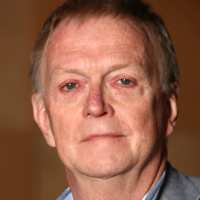 Stephen Phelps is an award winning television producer and broadcaster is a writer, television producer and broadcaster. After producing BBC’s Rough Justice, he established his own TV production company, Just Television, winning the Royal Television Society’s inaugural Specialist Journalism Award in 1999, and the New York Festival World Gold Medal for News Investigative Reports, 2001. In ten years Just Television’s award-winning series Trial and Error secured the release of more than a dozen men and women wrongly imprisoned for murder. Before that he was Deputy Editor of BBC’s Watchdog and Director, Hong Kong, for BBC World Service Television.
Stephen Phelps is an award winning television producer and broadcaster is a writer, television producer and broadcaster. After producing BBC’s Rough Justice, he established his own TV production company, Just Television, winning the Royal Television Society’s inaugural Specialist Journalism Award in 1999, and the New York Festival World Gold Medal for News Investigative Reports, 2001. In ten years Just Television’s award-winning series Trial and Error secured the release of more than a dozen men and women wrongly imprisoned for murder. Before that he was Deputy Editor of BBC’s Watchdog and Director, Hong Kong, for BBC World Service Television.

